Every year, when the dry season comes, it is also the time when yam, also known as hoai son, son duoc, a precious natural medicinal herb found in Ta Kou Nature Reserve (BTTN Ta Cu), Ham Thuan Nam district, is ready for harvest and sought after by people. The difference is that this year, son duoc is being successfully planted on a trial basis under the forest canopy, with the hope of expanding to households contracted to protect the forest so that people can increase their income in the future.
Precious medicinal herbs
Yam grows naturally in many mountainous provinces of our country, from Lai Chau, Ha Giang, Hoa Binh, Quang Tri to Lam Dong, Binh Phuoc... In Binh Thuan, the forest coverage is quite high at 43%. Due to ecological characteristics, under the forest canopy of the province, there are many precious medicinal plants growing naturally such as starling tam phan, mat nhan, blood dragon, yam...
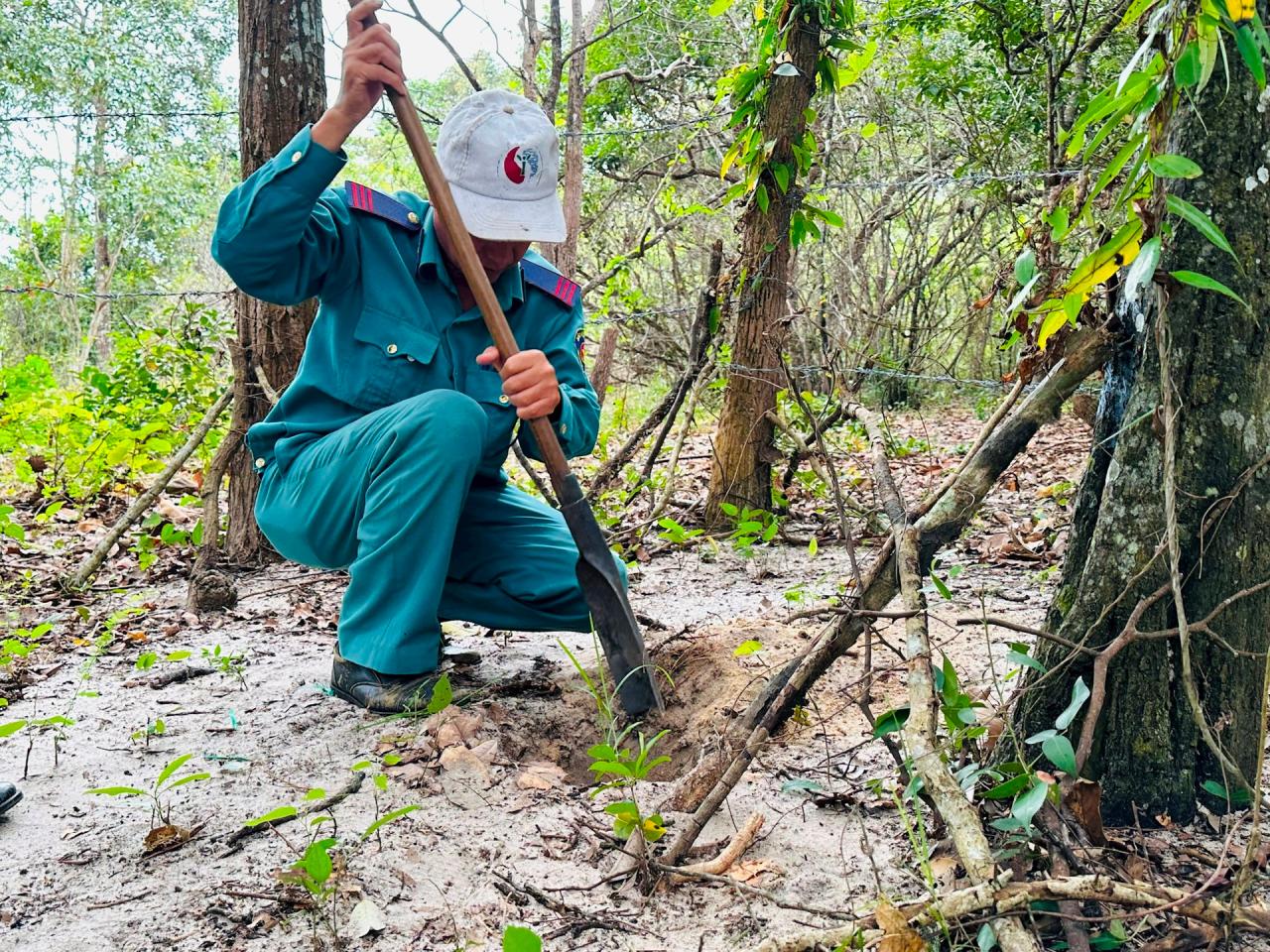
To see this precious medicinal herb with our own eyes, we followed the forest rangers to sub-area 300, Thuan Quy commune, under the management of Ta Cu Nature Reserve. In this area, there are quite a few natural yam vines, in the stage of withering leaves and growing tubers. The vine stems are long and small, growing and wrapping around the trunks of other trees. The yam tubers have edges that look like sesame seeds. The leaves of the yam plant are arrow-shaped, long-stemmed, pointed, green, and have net-shaped veins. Underneath the ground is the tuber with a diameter of 7-10 cm and a length of about 30 - 65 cm. The outer shell of the yam tubers is brown and rough, with many secondary roots, and the inside of the tuber is resinous and odorless...
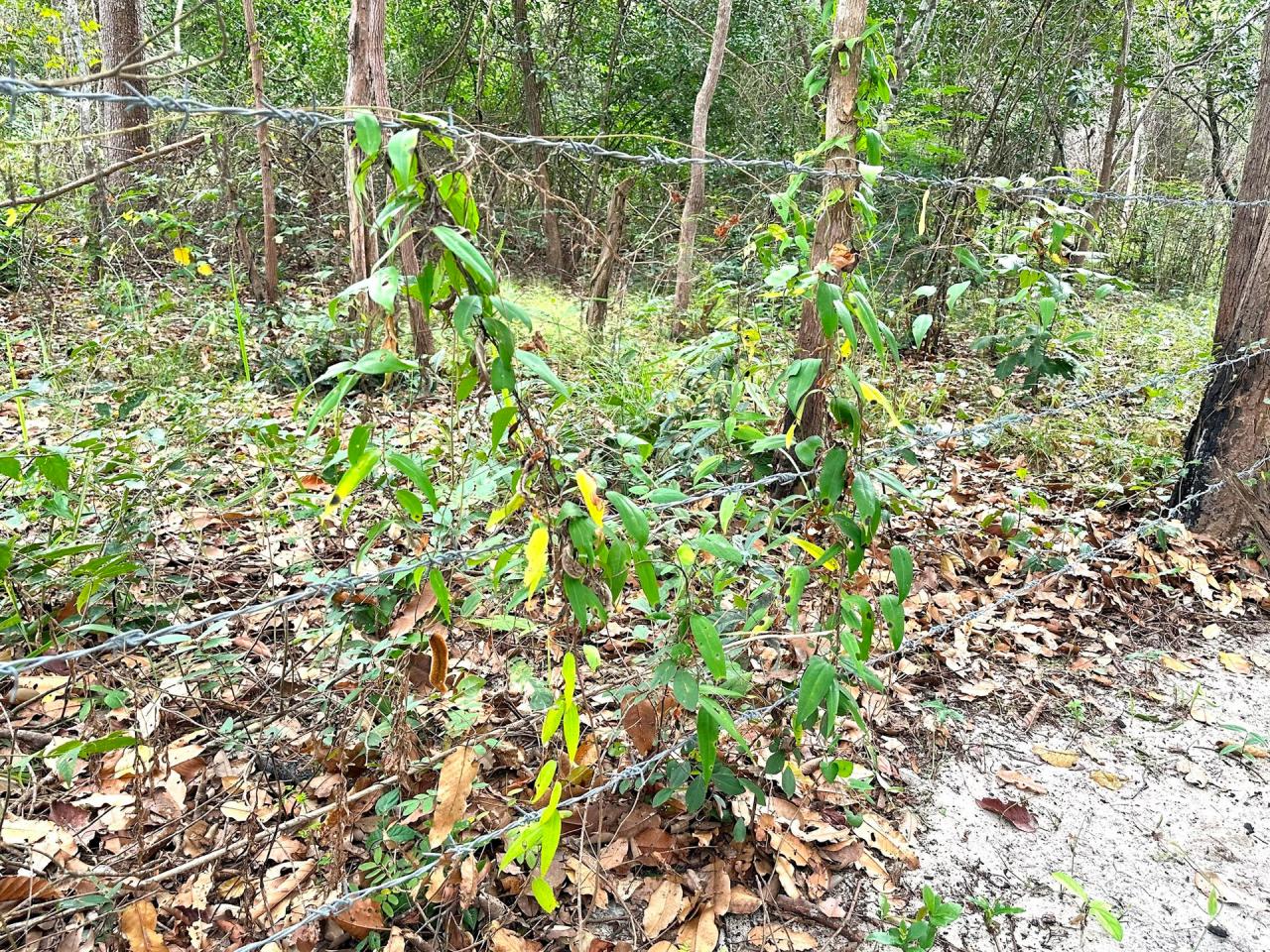
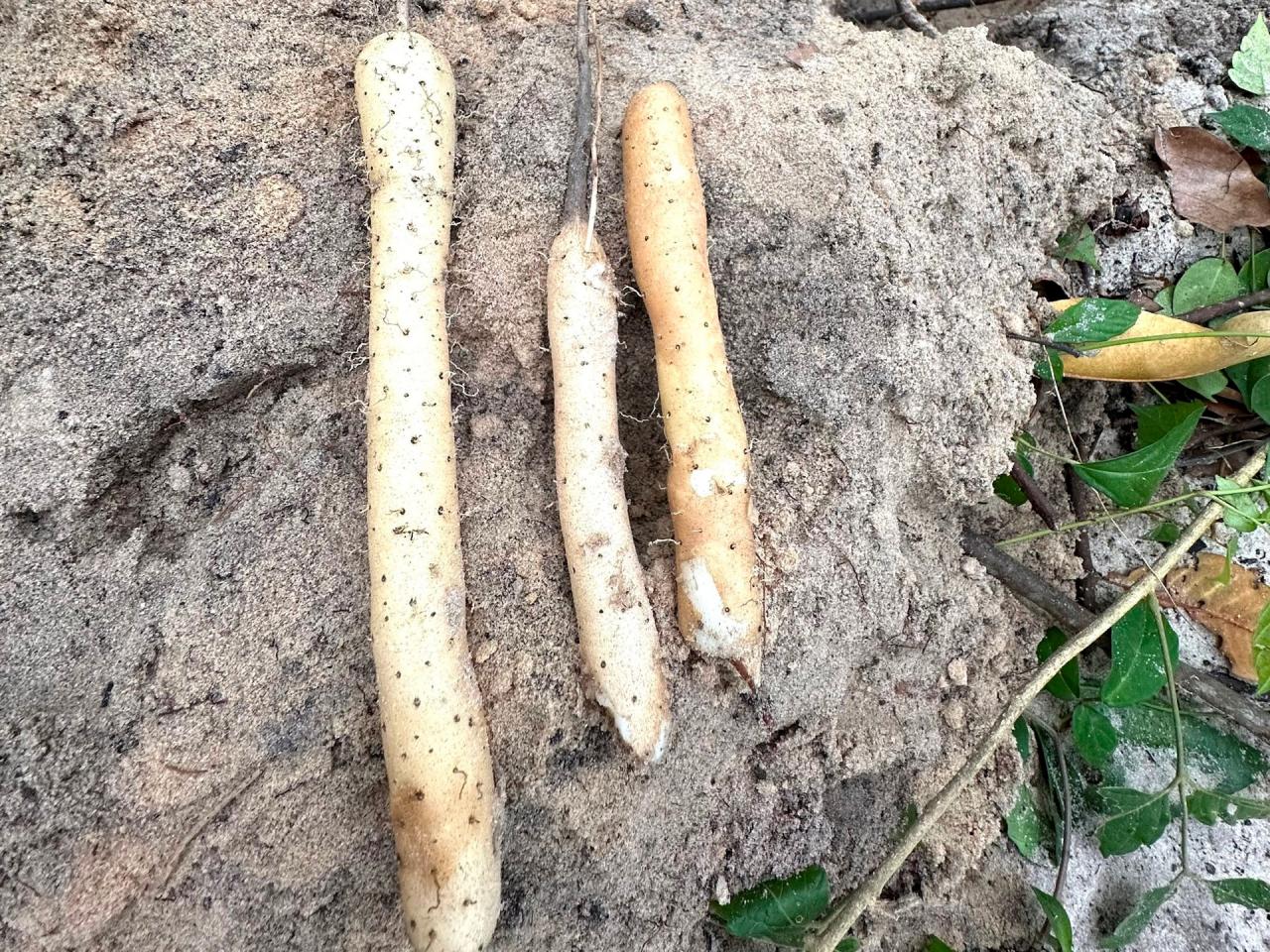
Introducing to us, Mr. Ho Thanh Tuyen - Deputy Director of Ta Cu Nature Reserve Management Board said that yam is the part used as medicine, the harvest time is in winter, starting from October to March of the following year, because this is when the yam has the best quality. At this time, local people often go into the forest to dig up yam, selling it to the market is very popular, with the local price from 50,000 - 60,000 VND/kg. Meanwhile, yam in Ba Ria - Vung Tau only costs about 30,000 VND/kg even though the tubers are large and long. When yam in Ta Cu reaches Ho Chi Minh City, Ba Ria - Vung Tau costs from 100,000 - 200,000 VND/kg, showing great potential. According to Mr. Tuyen, due to the specific climate and soil, the yam in Ta Cu forest area, although small, is delicious and has high medicinal properties, so it is sought after in large quantities, not enough to meet market demand.
Explaining why every year at this time Ta Cu forest has a lot of natural yam, the leader of the conservation area management board said that every time people dig up yam at the base, they will remove a segment of the root the size of a fingertip, cover it with soil so that the yam can continue to grow and be harvested the following year.

Developing and expanding the potential of medicinal resources
According to Mr. Truong Dinh Sy - Deputy Head of the Provincial Forest Protection Department, based on the potential and advantages of the forest, in 2023, the Provincial Forest Protection Department was assigned by the Department of Agriculture and Rural Development to carry out the task of building models of growing medicinal plants under the forest canopy.
The aim is to create a value chain, open up a new direction, contribute to the transformation of crop varieties towards commodity production, and increase economic value for people living near the forest. Accordingly, the unit coordinated with forest owners to implement 4 medicinal plant growing models, including planting and caring for 0.1 ha of yam under the natural forest canopy in sub-area 300, Thuan Quy commune, forest area of Ta Cu Nature Reserve Management Board.
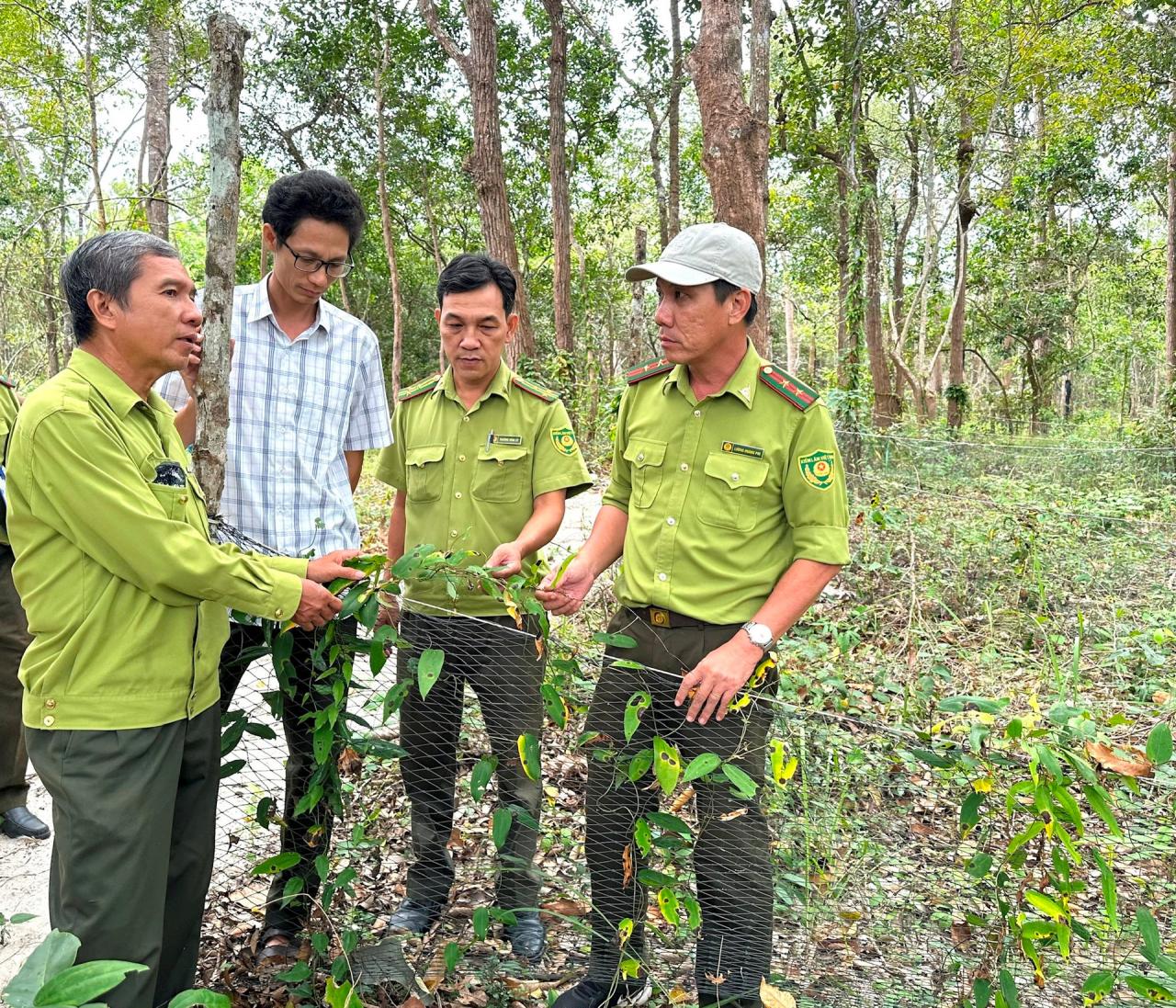
As the unit directly implementing the model, Mr. Ho Thanh Tuyen said that for a long time, people have exploited natural yams, and now the unit has begun to experiment with planting yams under the forest canopy of the conservation area. At this time, the plants have produced tubers, although the yield is not high, but they are still growing strongly compared to last year. Each tuber can weigh from 3 to 4 ounces and will be larger if well cared for. With an area of 0.1 ha of the model (designed with vines on a net), Mr. Tuyen estimated that the current yield is about 200 - 300 kg, if grown to the desired yield, it can reach 1 ton or more. Mr. Tuyen also recognized that the potential of yams in the conservation area is very large. The locality has special characteristics in terms of nutrition and soil, so the quality of yams is better and the selling price is higher than other places.
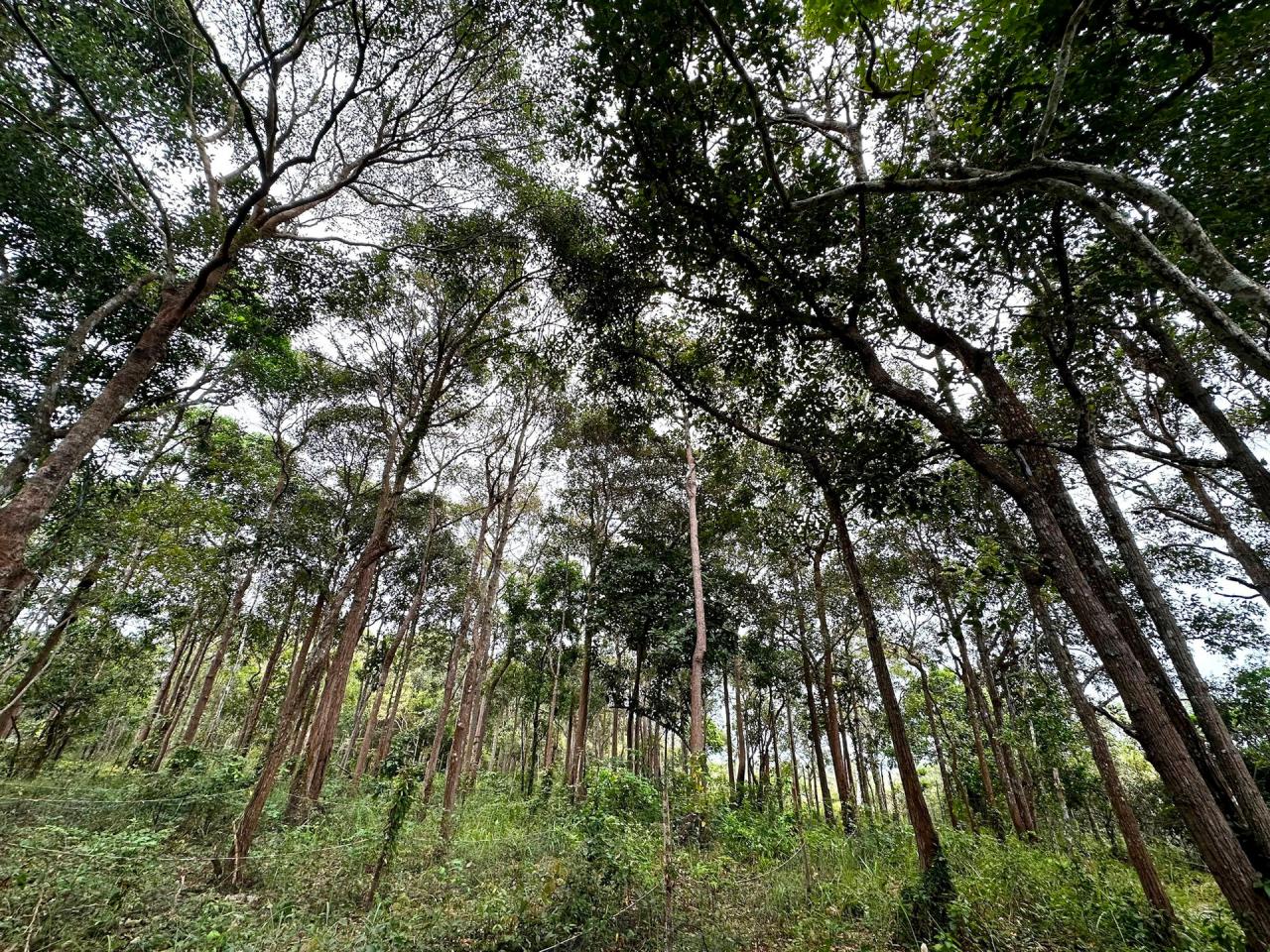
More importantly, according to a survey by the Ta Cu Nature Reserve Management Board, the forest area that can grow yam in the reserve is about 2,000 hectares. This opens up opportunities for people to contract forest protection to replicate the model to increase income. On the other hand, during the process of growing and caring for yam, people will manage and protect the forest better and more responsibly.
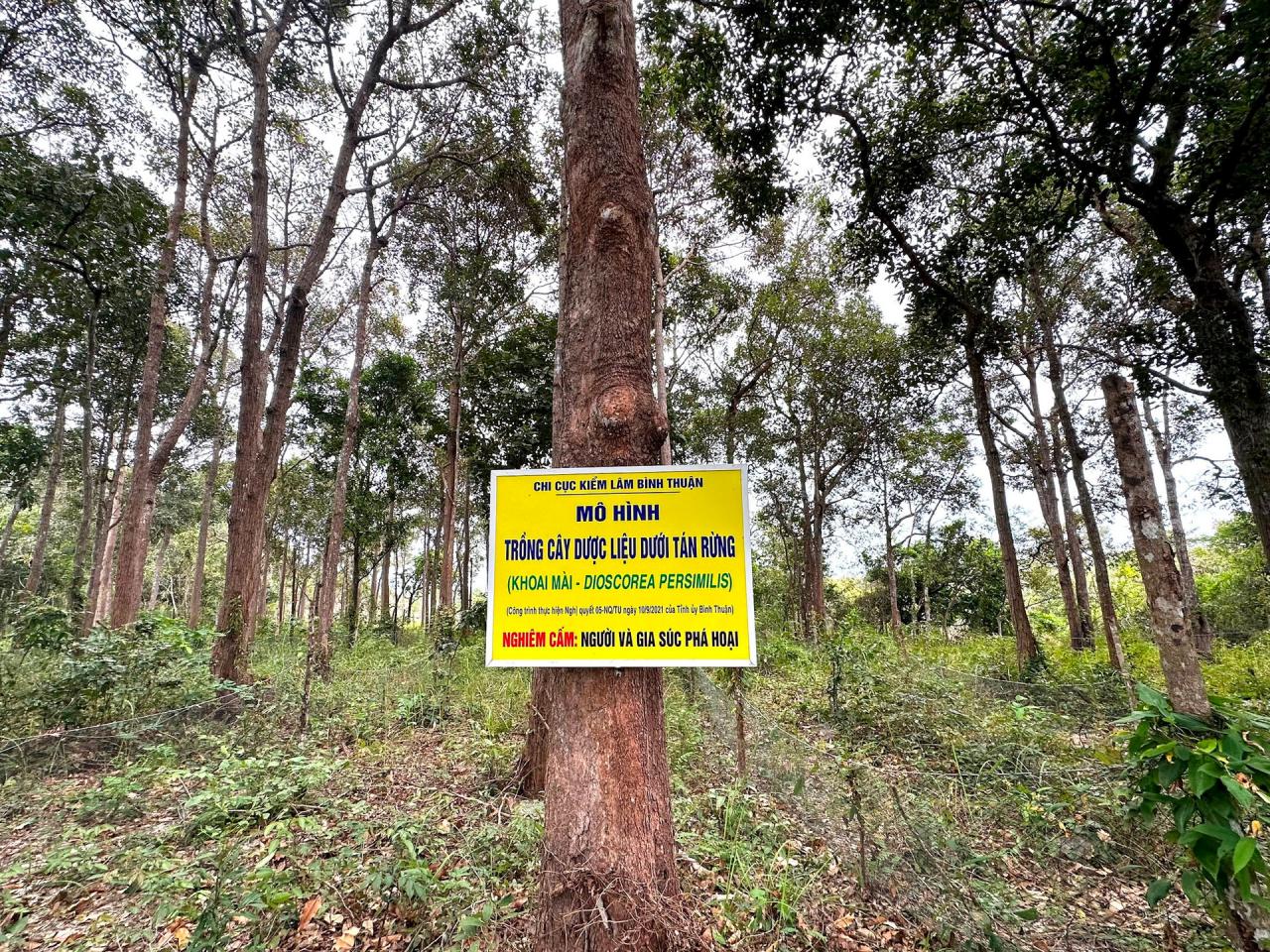
Despite initial successes, according to the leader of Ta Cu Nature Reserve Management Board, developing the model of growing yam under the forest canopy still faces many difficulties in terms of initial costs. The unit hopes to expand the yam area to 45-50 households contracted to protect the forest in the locality and continue to expand the planting to other households.
The provincial Forest Protection Department said that in the future, the unit will have a preliminary summary and propose to the provincial Department of Agriculture and Rural Development on the mechanism and policy for consumption and support of this product. In the future, it will expand the cultivation of Chinese yam in Ta Cu mountain, developing the economy for people living near the forest...
According to traditional medicine, Chinese yam has a sweet taste and neutral properties. Some main effects of Chinese yam: Nourishing the spleen and stomach, enhancing digestive function; nourishing the kidneys; nourishing the lungs, treating coughs and asthma; treating diabetes...
Source


![[Photo] Looking back at the impressive moments of the Vietnamese rescue team in Myanmar](https://vstatic.vietnam.vn/vietnam/resource/IMAGE/2025/4/11/5623ca902a934e19b604c718265249d0)
![[Photo] "Beauties" participate in the parade rehearsal at Bien Hoa airport](https://vstatic.vietnam.vn/vietnam/resource/IMAGE/2025/4/11/155502af3384431e918de0e2e585d13a)




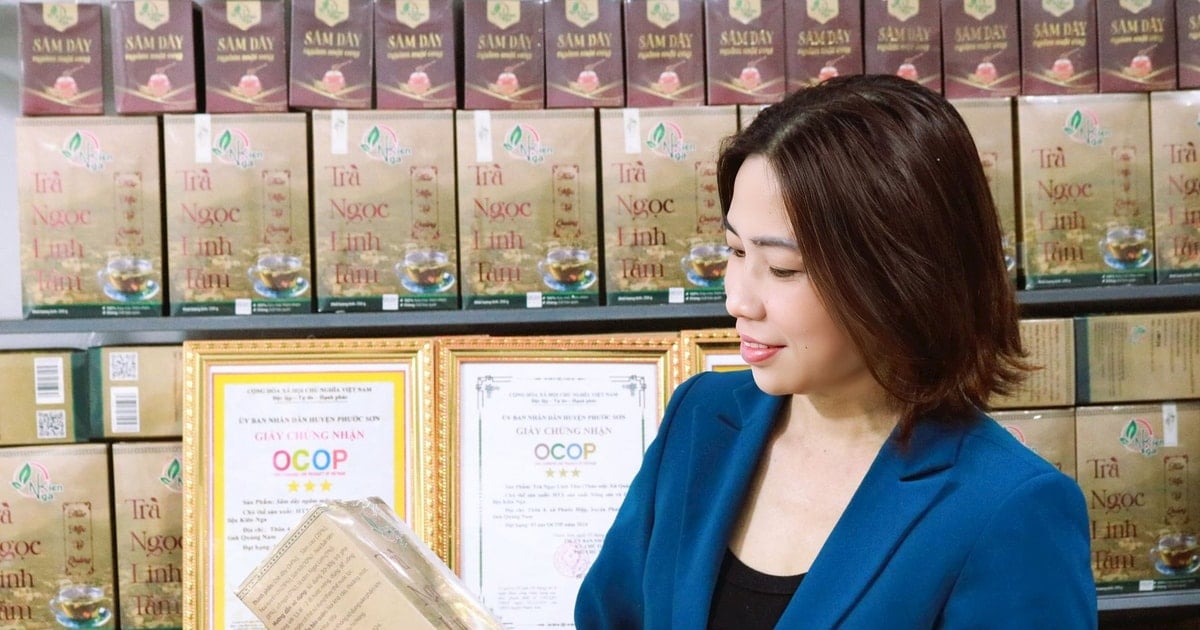


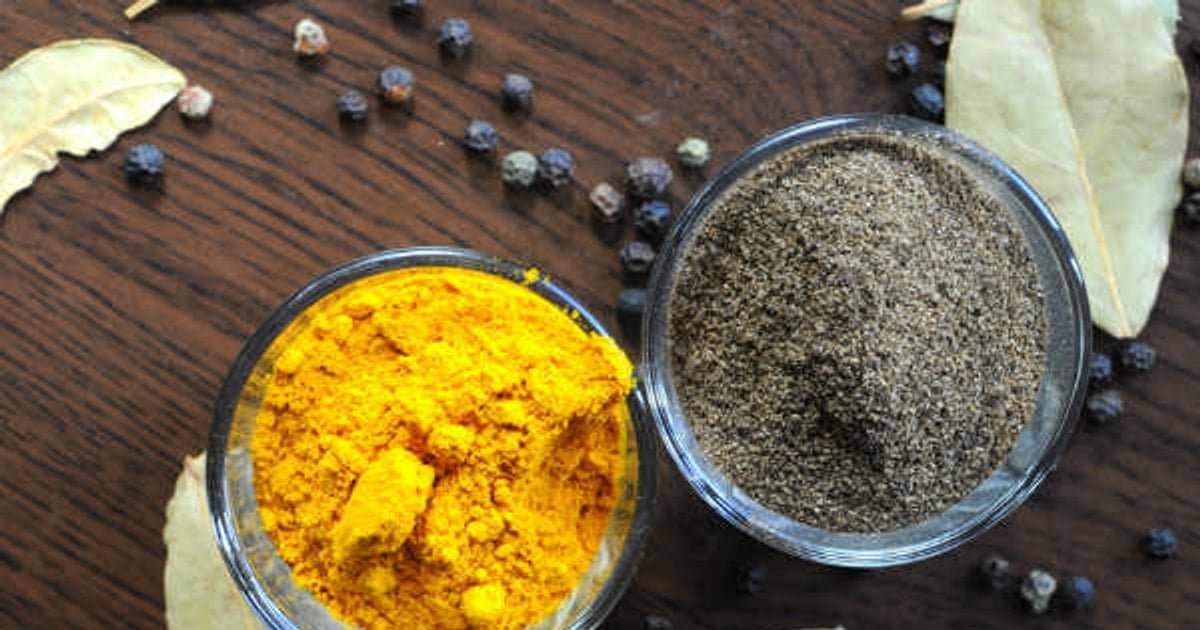



















![[Photo] Summary of parade practice in preparation for the April 30th celebration](https://vstatic.vietnam.vn/vietnam/resource/IMAGE/2025/4/11/78cfee0f2cc045b387ff1a4362b5950f)





























































Comment (0)